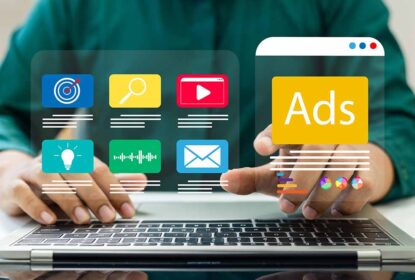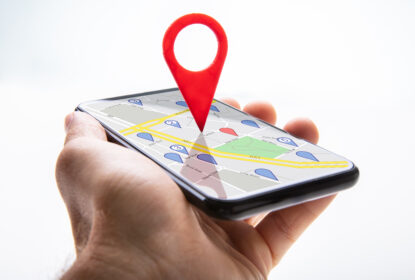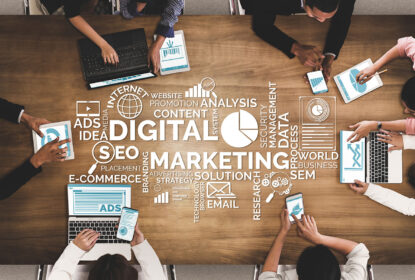COVID-19 has reshaped how businesses around the world connect with and target their consumers. For companies to stay in the green, all industries must embrace and adapt to these new challenges they face to reach their target audience. At the forefront of keeping society together, the digital world leads the way. 2020 has forced all industries to utilize every digital tool available to them.
Since the pandemic reached the U.S. in early 2020, life has not been the same. Daily interactions for people have transitioned to remote digital conversations. Now more than ever before, society has no other choice but to adopt new technologies. Technology is the solution for industries to prioritize safety above all else while limiting human contact. Furthermore, let’s take a glance at how digital technology has helped improve our current situation and started a digital revolution.
Changes in the Healthcare Industry
Digital technology has always been a part of the healthcare industry but never to this extent. COVID-19 spread so rapidly that it forced healthcare leaders to address these issues with different protocols swiftly. Doctors now rely on virtual healthcare, which includes video visits, chatrooms, and new digital payment methods to take care of their community remotely.
Healthcare systems have been trying to adopt these new digital structures as fast as possible. In their best attempts to protect the population from COVID-19 exposure, the face-to-face model of the healthcare infrastructure has changed.
Digital technologies integrated with Healthcare during COVID-19:
- Disease Tracking
-diseases activity daily
-Tools like data dashboards, migration of disease maps, machine learning, and real-time data from smartphones and wearable technology - Screenings for Infections
– Used to screens individuals and populations for disease control
– Artificial intelligence; digital technology thermometers; mobile phone applications; thermal heat cameras; web-based tools - Contact Tracing
– Identifies and tracks individuals who might have come in contact with an infected person
– (GEO) Global positioning systems; mobile phone apps; real-time monitoring of mobile devices actively; wearable technology - Quarantine and Self-isolation
– Helps to identify and track infected individuals, ensuring they meet quarantine requirements
– Artificial intelligence; cameras and digital recorders; global positioning systems; mobile phone applications; quick response codes - Clinical Management
– Diagnoses individuals who are infected; monitors clinical status often; predicts clinical outcomes for individuals; provides capacity for telemedicine services and virtual care
– Artificial intelligence for diagnostics; machine ready learning; virtual online care or telemedicine platforms systems
Even though healthcare continues to move more and more online, especially in the wake of COVID-19, patients still do not trust digital healthcare services. In fact, from 2019 to 2020, show patients’ trust in digital healthcare information has dropped by 6%.
Changes in Online Learning
Digital technology has already played a large role in the way Universities taught college students around the United States even before COVID-19. However, at the high school and lower levels, remote learning was not a part of education until COVID-19. Colleges use software like Blackboard to communicate, assign work, access eBooks, and take attendance.
Since the pandemic forced virtually every institution to online learning for a time, professors and teachers have had to think outside of the box, turning to new digital technology to teach students more effectively. Tools (whether they are apps, websites, and video call digital technology) have been giving students the ability to learn remotely. Families around the world have had no other choice but to use digital devices to access educational material remotely.
Instead of students having face-to-face and hands-on learning, digital technology allowed instructors and students to continue to communicate and learn effectively. Adapting to remote learning means instructors must be willing to try technologies like cloud technologies.
The Cloud provides students with various computer resources, networks, storage, applications, and services they can benefit from using. Remote learning has opened a whole new market for digital technology to expand even further into the classroom setting.
Changes in the Food Industry
Grocery Stores
One of the hardest-hit industries since COVID-19 begun has been the food and hospitality industry. When the virus first began, families rushed to their local grocery stores to stock up on as much food as possible. With so many unknowns ahead, families had to prepare for the unpredictable future. Unfortunately, consumers ran into empty shelves and limited selections on products like toilet paper, meat, and other household goods.
Even before COVID-19, many large grocery store companies had already established a digital way for consumers to shop online. Since the virus began spreading, grocery shopping patterns of consumers have changed. According to the FMI-The Food Industry Association’s annual U.S. Grocery Shopper Trends study, 28% of consumers shop online more, 15% reported avoiding stores they normally shop at, 11% changed where they shop most often, 10% shop at different types of stores, and another 10% have stopped going to stores entirely.
With no choice other than to social distance, grocery stores now provide apps for curbside pickup, online ordering, and even grocery delivery services. Grocery stores felt the pressure when consumers started eating at restaurants less and cooking for themselves at home more.
Restaurants
COVID-19 has forced restaurants to become as tech-savvy as possible to stay afloat. In most states, dining room areas are now finally reopening after several months of remaining closed. Many new technologies have emerged in the restaurant industry that offers improved safety and sanitation measures for guests.
One digital technology that is here to stay (even after COVID-19) is electronic menus. Guests now scan QR codes that pull up a direct link to the menu. This new contactless way to pick out your food requires establishments to invest in up to date websites for guests to see their menu.
Another cool way to order food without human contact is tableside ordering on tablets. Restaurants set up a point of sales wireless system that can take and process orders electronically tableside. Tableside ordering not only reduces human contact but also reduces the need for businesses to pay servers, saving them money.
Self-ordering technology has now proven to be a vital tool for owners to invest their money in. Guests feel at ease when using self-order kiosks because, again, there is no close human interaction. Consumers are also utilizing digital engagement in mobile apps. The business gains useful insight on consumer behaviors while customers feel motivated to return with loyalty programs in place.
The world may not be the same now as it was at the start of 2020, but the way we utilize digital technology today will help our transition into the future. Digital technology will forever be intertwined with the way individuals make decisions. COVID-19 gave many businesses and industries the nudge to transition to digital technology moving forward.











